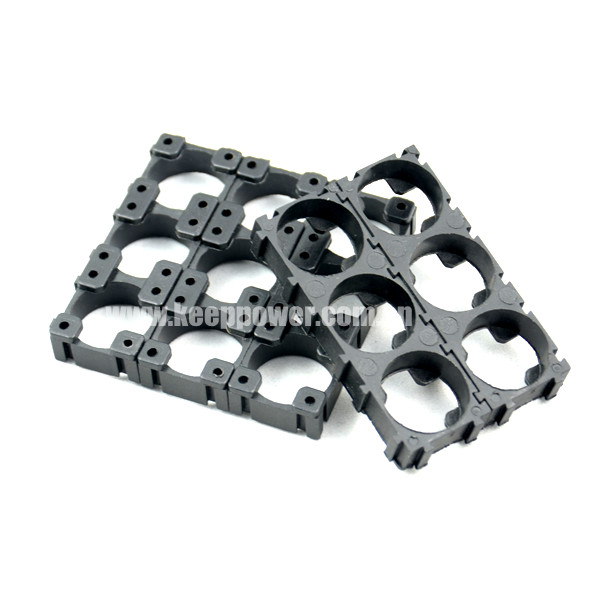Well, since my long(er) term goal is to drive an electric car, and however much I want one, I really can't afford a Tesla Roadster, I'll have to DIY one.

In this topic I want to document the process of me building my own battery pack (on the cheap), Everything from gathering materials, to assembling + me figuring out what BMS I want, charging it, etc..
First some (personal) history: Ever since I got my drivers license, and through random internetting stumbled upon the ForkenSwift conversion, I really want a DIY Electric car. However, a few things were holding me back.
1: in feb/2010 the regulations for a DIY conversion were made much stricter, requiring EMI/EMC certified parts (which were hugely expensive), which made the plan financially impossible. (they're now freely available from crashed EV's and hybrids)
2: battery writeoff, when you write off 20 cents a km on the cells alone, its not a very financially wise plan. Battery cost has come down a lot since 2009 though.
While random-youtubing, I stumbled upon a video of a guy building battery packs out of old laptop batteries. This is really quite briliant because:
- Its the same type of batteries in the Tesla cars. (18650 cells)
- Once a single cell in a laptop battery fails, the whole pack becomes useless to a laptop, but most of the cells inside will still be very much useable, even if they're partly worn.
- OEM laptop batteries use brand name cells, they're probably better than cheap no-name chinese cells, even if they're worn a bit, they might still have lower resistance, more capacity, more cycle life and cost less at the same time.
- Dead laptop batteries are of no use to anyone else, so
should be cheap. The trick is finding them before they go to the battery recycling plant.
And thus, my quest began.
 Chapter 1: materials.
Chapter 1: materials.
I've been looking on eBay at laptop batteries. 1 guy selling them for $9-10 a piece, thats not really cheap enough, but its a source, so I'll keep it in mind.
Then I spotted an auction, starting bid $1, Buy it Now $30, for 95 batteries.
By the description of the seller, I concluded that they should be all 6 cell batteries, so 570 cells (give or take a few.) Sadly, the downside of this deal was that I had to hire a courier to bring them to me, they were in the UK, and I'm not. None of the normal mail companies want to move such a large quantity of li-ion, so I got a man-with-a-van to do it for $100. Still a good deal, $1.36 per laptop battery, or $0.23 per cell, thats a lot cheaper than the next cheapest eBay seller.

I'm keeping my eyes open to find more batteries in bulk like this, this gives me the EV smile.

I might contact the national battery recycling company and see if they're willing to send some laptop batteries my way at a small fee. Probably not, but it doesn't harm to try, right? Re-using is the best form of recycling, in my opinion.
I bought a few rolls of nickel-plated strip, I plan to spot-weld one side of the cells, and solder the other with fuse wire. So should 1 cell short-circuit internally, it doesn't draw hundreds of amps from its parallel brothers untill it catches fire, it'll only draw a few amps and the fuse will blow. Apparently, thats how Tesla does it? I also bought a roll of 30 gauge solid copper wire for the fuse wire.


I looked at mounting the cells, theres those cheap plastic clip-together endplates.. well "cheap", they're pretty much the same price I just paid for the cells, so eh, I might have to think up something else. On the other hand, they're pretty solid looking, a good way to securely mount the cells. I'm not quite sure yet how to proceed on this part.
 Chapter 2: equipment
Chapter 2: equipment
Next up, I'll be fixing up some testing equipment to sort the good from the bad.
The idea is to strip the batteries to bare cells, charge each individual cell in a cheap 1-cell charger, toss them in a box for 2 weeks to weed out the ones with stupid self-discharge, then put them in individual dischargers (automate somthing with an arduino) to measure their capacities and sort them by that.
Dead ones go to recycling, weak ones might power something like an e-bike or an alternator-delete or some solar led lams or something?, and the good ones will be mix&matched to get balanced capacity parallel groups.

I'll also need a spot welder, I already have a microwave transformer, so all I need is 2 turns of fat wire, and a wooden handle with 2 nails or something to prod the cell tabs with, and a foot-operated switch to turn it on. Not too difficult.
Chapter 3: BMS.
Well, theres plenty of options to pick from here. I'll get back to that later, I guess. Building comes first.
Anyway, thats it for now, more will be added as soon as it happens.
